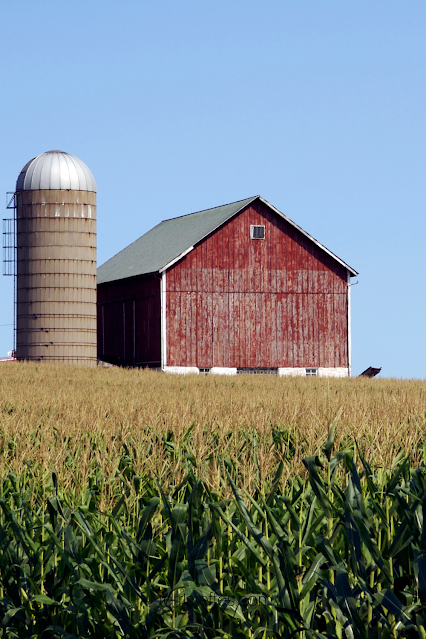Running a farm means juggling nonstop tasks—feeding, cleaning, managing animals, and trying to stay one step ahead of breakdowns. But not every improvement has to be big or expensive. Sometimes, a small change to a pen layout or feeding setup can save hours, reduce stress, and keep animals healthier with less effort.
This article covers quick, low-cost fixes for poultry, goats, pigs, horses, and cattle. Whether you're dealing with waste buildup, inefficient feeding, or chaotic workflows, these tips are easy to apply and make a noticeable difference in daily farm life.
Smarter Feeding With the Right Poultry Gear
Better feeding methods can bring fresh energy to managing poultry. Anti-waste feeders are especially helpful because spilled feed is reduced, which saves money. Feeders like that make sure each bird gets what it needs without a lot of leftovers. UV-stabilized waterers are also a smart choice since bacteria growth slows down, keeping flocks healthier and supporting better nutrition.
Hanging poultry feeders and waterers that stay off the ground are great for keeping food and water clean. Watching how much the birds eat using batch feeding logs helps spot unusual patterns early, so farmers can act quickly if something seems off. Keeping a log makes it easier to track trends and support better health and efficiency in the flock.
Stress-Free Feeding Schedules for Goats and Sheep
A consistent feeding routine supports better health in goats and sheep. Raised hay racks keep food accessible while reducing trampling that can lead to injuries or waste. Raised feeding also matches the natural eating posture of goats and sheep, making mealtime more comfortable and lowering the risk of parasites. Adjusting rack height to suit animal size encourages healthier eating habits.
Scheduled feeding times, such as mornings and evenings, help the herd develop a steady rhythm. Predictable routines minimize stress and reduce food-related aggression. Rubber feed pans offer added safety thanks to the soft material, which helps prevent injuries. Changing the position of feed pans within the pen occasionally maintains cleanliness for both animals and farmers.
Daily Cleaning Tricks That Keep Pig Pens Healthier
Keeping pig pens clean reduces illness risk and cuts long-term costs. Sloped floors or drainage trenches move waste away quickly, preventing puddles that breed harmful bacteria. Even a simple design tweak like this limits mess and lowers the chance of health issues tied to unsanitary conditions. A consistently clean space keeps pigs in better condition and can reduce vet expenses.
After cleaning, spreading hydrated lime controls odor and kills surface bacteria, keeping the pen fresher for longer. Training pigs to use a single waste corner simplifies cleanup by narrowing the target area during chores. A habit-based layout encourages cleaner routines, speeds up daily maintenance, and minimizes waste buildup.
Grooming and Parasite Control for Horses Made Easy
Simple grooming routines support horse health without requiring much time. Brushing daily with rubber curry combs—especially during feeding—makes the process easier and reduces loose hair. Regular grooming improves blood flow and strengthens the bond between horse and handler, promoting calm behavior. A consistent routine provides comfort and makes grooming feel like a normal part of the day.
A separate grooming tote for each horse keeps tools organized and limits the risk of infection spreading between animals. Easy access to supplies saves time during chores. Monitoring fecal egg counts and rotating between natural and chemical dewormers helps manage parasites effectively, reduce resistance, and maintain overall horse health.
Cattle Chute and Pen Setup Tips That Save Your Back
Setting up cattle areas the right way can make handling animals easier on the body. Curved chutes with solid sides help animals move calmly, which lowers stress during handling. Designs like that help cattle walk through more smoothly and reduce chances of injuries for both people and animals. A well-planned layout makes regular care easier and helps out in emergencies, too.
Portable panels with quick-connect parts let farmers adjust pen layouts fast. Useful for loading cattle or doing health checks. Keeping tools close by and labeling clearly saves time and keeps things running smoothly. When everything’s easy to grab, jobs get done faster, and vet visits or treatments become less stressful for everyone.
Small, practical changes can shift the pace of an entire farm without requiring major investments or overhauls. Smarter feeding setups, cleaner pens, mobile tools, and better animal handling routines all reduce stress—for both farmers and livestock. These tweaks don’t just make tasks easier; they improve health, cut waste, and free up time for more important work. The key is to look for friction points—areas that slow you down, create mess, or add extra steps—and replace them with something simpler and more effective. Over time, these adjustments build a more efficient, calmer, and more productive farm environment that supports both daily operations and long-term stability.



Post a Comment